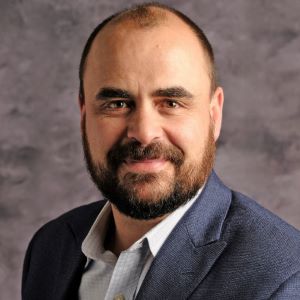
It has been more than nine months since 239 scientists shared in an open letter their concerns with the World Health Organization that COVID-19 was not exclusively transmitted through droplets, but was an airborne pathogen.
To put what “airborne” means in plain English: When someone walks into a room where infected people have previously shed viral particles, it doesn’t really matter whether they are at six feet, 12 feet or 18 feet from each other. Social distancing is not what will keep us safe when virus particles that are 10,000 times smaller than a human hair are suspended in the air for hours and travel up to 30 feet.
“What about vaccines then?” people will ask at a time when a growing number of nursing home residents are vaccinated. The vaccine’s protection is welcomed, but it is not 100% — not for people who are vaccinated and not for those in close proximity to the ones who are vaccinated.
It’s normal for public policies to lag behind the best available science at any given time on any given issue. Remember how long it took us to implement adequate safety regulation to rid buildings of asbestos in nursing homes and office buildings?
New scientific insights on important problems for our health and well-being are first shared in academic papers, which are then picked up by popular science journalists, whose reports find their way into the mainstream media, stirring public opinion and making — finally — policy makers take action to respond to the concerns of their voters and get to work on new rules and regulations. With COVID-19, the problem is that we simply do not have time to wait for this entire process to unfold at the typical speed. More than 520,000 people have died in the United States, and sadly enough we can expect many thousands of more lives to be lost in the months ahead of us.
More than 160,000 deaths were among residents or staff of nursing homes or other long-term care facilities. This is a country of aging public buildings that were built to be as energy efficient as possible, which meant they were designed to keep air INSIDE as much as possible! Here in lies the dilemma – recirculating inadequately ventilated or filtered air makes indoor air more dangerous.
Researchers from RMIT University in Australia have discovered that in some nursing homes, levels of carbon dioxide were more than 3 times recommended levels, which is clear proof of poor ventilation. To some extent, the design of nursing homes, where you have wide corridors to allow for beds to be transported, compounds the problem.
Facilities and building administrators can upgrade existing HVAC configurations and settings, but this is only part of the solution. As with any complicated problem, the answer is complicated — with some difficult trade off decisions. Can my HVAC system run continuously while a building is occupied? Can it handle the “beefed up” filtration required to offer improved air cleaning? Is it enough protection? Will I be able to convince my staff and customers, it’s now safe to enter? The answer to some or all of these, is often “sort of” or “no.”
Now what?
Upgrading an HVAC system can be daunting, confusing, take a long time and cost millions of dollars, but thankfully we can turn to tried and tested technology. Professional (not consumer grade) portable, medical HEPA and UVC units are powerful tools to address inadequate ventilation and indoor air safety. See, for example, this CDC recommendation on indoor air ventilation.
They’re also practical and remarkably affordable. With decades-long track records and improvement, they certainly don’t need fancy marketing buzzwords or “pandemic fear mongering.” They just work.
A professional air cleaning system, whether portable or built-in, will change the air at least six times an hour. In extremely crowded environments, more systems may be needed (easier in the case of modular portable solutions) to achieve appropriate air changes per hour. Changing the air less than six times an hour will hardly move the needle; it simply won’t clean the air fast enough to fight this or any other airborne virus. At that point, building administrators are probably better served to save their money and simply require everyone to wear N95 masks.
Air purification systems form part of engineering controls that are not only efficient in keeping the air clean, but also dependable. They do not get distracted, or sloppy. They do not ignore guidelines. Machines are simply switched on and run continuously. They flank, but don’t replace, all the other common risk mitigation factors in place today.
Safe nursing homes will keep people from getting sick while they are inside. Engineering controls like portable air purifiers will protect residents, staff and visitors by significantly reducing their risks of catching COVID-19 or other airborne pathogens. The importance of not only providing safe air, but also to reassure people, is often overlooked.
The lack of airborne infection control at these facilities has impacts beyond getting sick. We’ve read and heard of the heartbreaking stories of isolation caused by this pandemic to many of our elderly parents and family members who live in nursing homes or assisted living facilities. Portable air purifiers deliver a clear solution AND a message that says, “We’re doing everything we can to keep you safe.”
We owe it to our most vulnerable population to take any and all measures necessary to keep them safe against airborne illnesses. Portable, professional grade air cleaning systems are a powerful weapon to help us achieve this.
Paul de la Port is president of Omni CleanAir, an air purification company that has been eliminating airborne illnesses in office buildings, schools, hospitals and nuclear power plants for more than 30 years.




